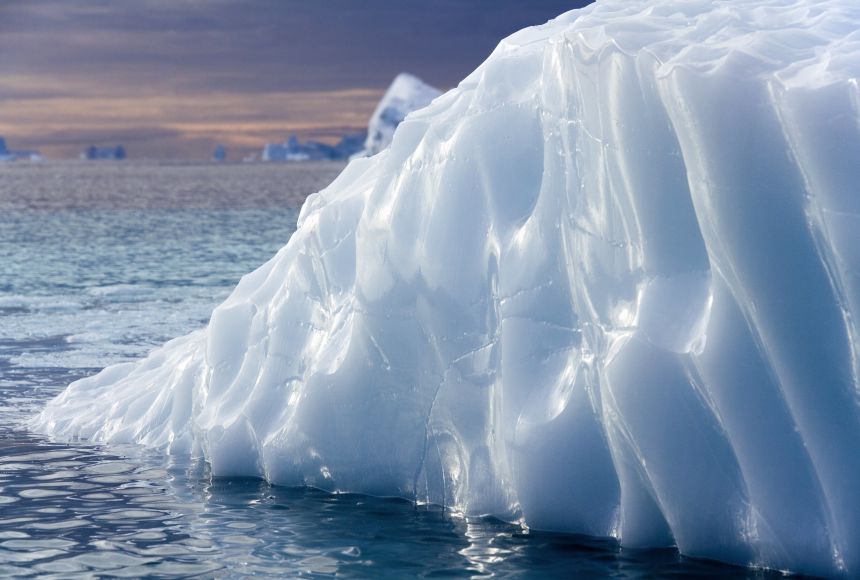Glaciers are melting, sea levels are rising, and storms are more intense. These are some of the visible impacts of global warming, caused by rising levels of carbon dioxide and other greenhouse gases that are due to warming in the atmosphere and ocean.
In a 2018 report, the Intergovernmental Panel on Climate Change (IPCC) stated that the average global temperature has risen about 1ºC (1.8ºF) since pre-industrial times. If the current rate of warming continues, this number is expected to nearly double in a relatively short time, reaching 1.5ºC (2.7ºF) between 2030 and 2052. This could have devastating effects on ecosystems around the world, from tropical coral reefs to the icy Arctic Ocean.
Why is such a small increase in global temperature causing such big problems for Earth’s ecosystems?
The Ocean Is Feeling the Heat
More than 80 percent of global warming is absorbed by the ocean, which has a massive capacity to store and release heat. Elevated sea-surface temperatures are causing long-term damage to coral reefs. Corals are bleaching and dying. The IPCC report projects that up to 90 percent of coral reefs could disappear if the global warming reaches 1.5ºC (2.7ºF). Another reason corals are in trouble is because of ocean acidification. Higher carbon dioxide levels have shifted the chemistry of the ocean, making it more acidic, and corals and shelled sea creatures have trouble growing in acidic conditions.
Sea Levels Are Rising
When ocean water warms, it expands in volume. This is a major cause of the rise in sea levels, along with the water added to the ocean by the melting of land-based glaciers. The sea level has risen an average of 20 centimeters (8 inches) since the late 19th century, and research by scientists studying the last 25 years of satellite data found that the ocean water is rising faster and faster. If it continues at its current rate of acceleration, the rise in sea level by 2100 will be more than double current estimates. Sea level rise leads to the destruction of coastal wetlands, salt marshes, and mangrove swamps, as well as flooding and damage to aquatic ecosystems.
Drought to Deluge: The Impacts of Shifting Temperature and Precipitation
Temperature and precipitation are key ingredients of climate. A warmer climate means that more water evaporates from both the land and ocean, and a warmer atmosphere holds more of that water. Scientists have noticed that heavy rainfall events are increasing. Additionally, higher water temperature in streams, lakes, and reservoirs lead to lower levels of dissolved oxygen in the water, which impacts the survival and populations of fish and other aquatic life.
Especially troubling are the extreme weather events that are happening more often around the world. Hurricanes are ramping up in intensity, particularly in the North Atlantic. The year 2017 was a busy one for Atlantic hurricanes. Hurricanes Harvey, Irma, and Maria unleashed their destructive power on Texas, Florida, and Puerto Rico. A group of scientists using high-resolution computer modeling determined that the main reason the 2017 hurricane season was so violent was due to warm sea-surface conditions in the North Atlantic. This led to a new way of predicting what to expect each year. The intensity of the Atlantic hurricane season depends on how much the tropical Atlantic warms in comparison to the rest of the global ocean.
Meanwhile, in the western United States, the state of California has had record-setting drought conditions, which began in 2012. Researchers analyzing the history of California’s droughts found that the state is more likely to experience drought when low precipitation combines with warm weather conditions. Extended drought periods can lead to a higher fire risk. Today, large fires are five times more common and fire season is three months longer than it was 40 years ago. Besides the obvious loss of habitat for wildlife, new research has found that ecosystems burned out by a wildfire no longer regenerate and bounce back to life the way they used to.
Melting Away: What Is Happening to the World’s Ice?
Snow pack, sea ice, and glaciers are melting around the world. One of the most visible effects of climate change is the rapid disappearance of glaciers. Scientists from Glacier National Park in Montana, U.S., have documented the steady decline of the park’s iconic glaciers with photographs. Glaciers around the world are melting faster than snow and ice can replenish them. In fact, the Arctic is warming faster than any other place on Earth, at a rate of two to three times the global average. This has led to a 40 percent decrease in the minimum summer sea-ice cover since 1978. When ice melts in the ocean, fresher and less dense water is added to the North Atlantic, which could potentially disrupt a pattern of ocean circulation that is driven by the sinking of cold, salty water in the North Atlantic, known as thermohaline circulation.
The Arctic ecosystem is especially vulnerable to global warming. Polar bears, narwhals, and walruses are all iconic species native to the Arctic, but as the ice melts, they may have to adapt to a new way of life, or risk dying out. In an interview published in the British newspaper, The Guardian, marine ecologist Tom Brown said, “The Arctic food chain relies on a stable sea ice platform and that is now disappearing, putting the region’s wildlife at risk.”
